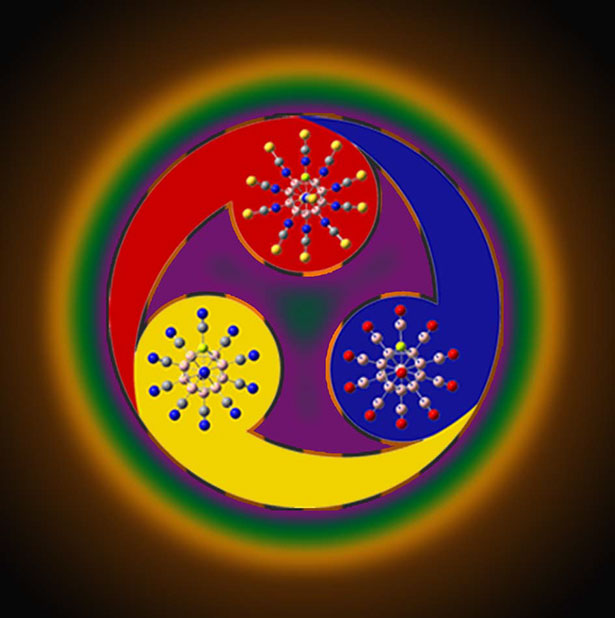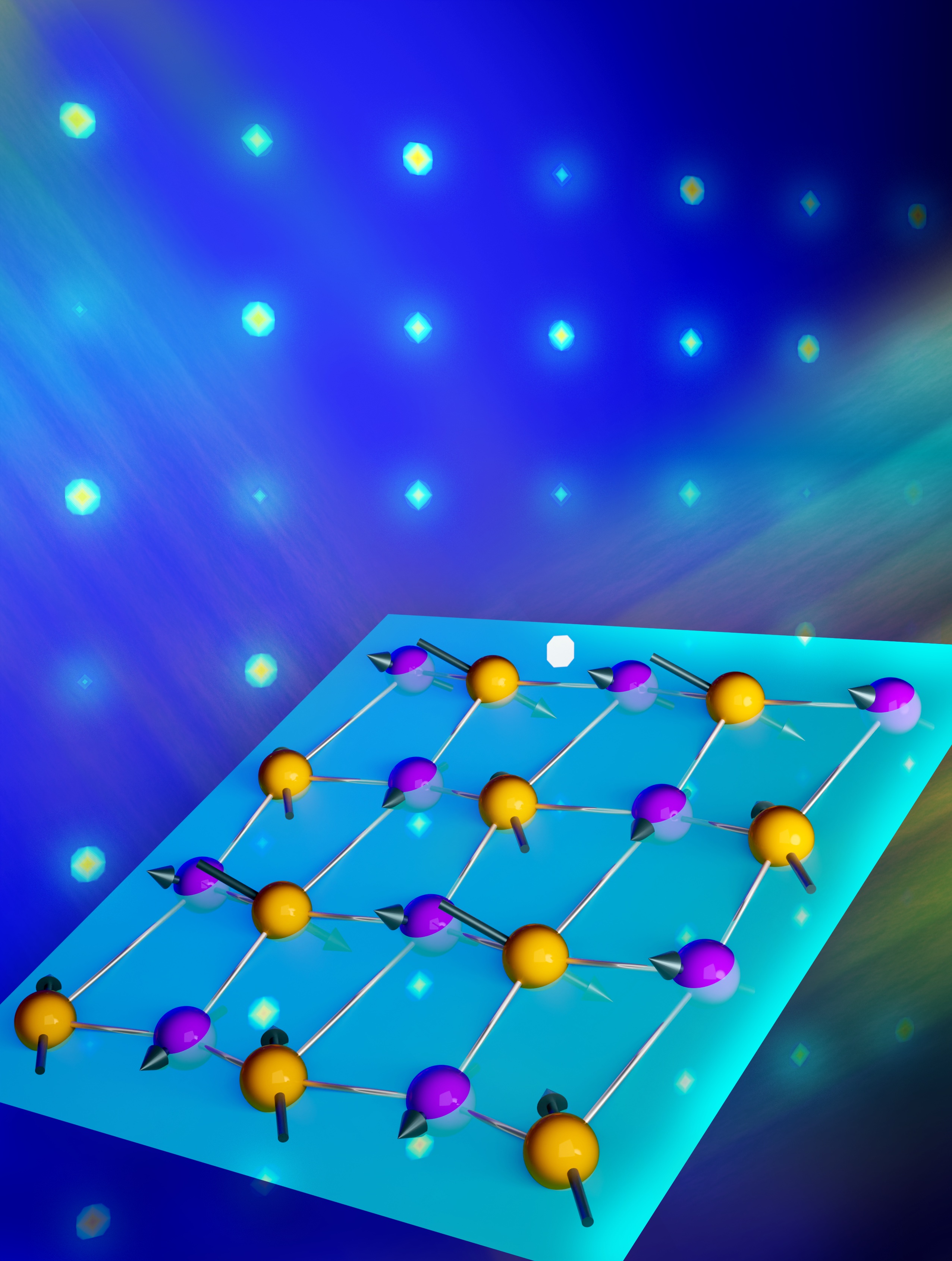Unwavering Juggler With Three Extra Electrons
Simulations discovered the first molecule with three extra electrons and extraordinary stability.

The Science
Typically, when molecules in the gas phase have three extra electrons, they are unstable. They either decompose or eject the extra electrons. However, researchers predicted new molecules that contain three extra electrons. These molecules should be stable in the gas phase. They are called trianions. Surprisingly, the predicted molecules are colossally stable and highly resistant to auto-ejection of an electron.
The Impact
Trianions are likely to have unusual reactive properties. Also, they could benefit energy-relevant applications. For example, a trianion could shuttle aluminum back and forth in a new type of battery. Such a device offers an attractive alternative to lithium-ion batteries. The stability of trianion species may also have a big impact elsewhere, such as fuel cells and purifiers.
Summary
Researchers have found a new way to predict the stability of multiply charged molecules using high-throughput simulations, which are becoming an important materials discovery tool. These tools can be used to study the properties of large ionic molecules with multiple charges. Previously, the stability of a multiply negatively charged ion was often interpreted within the context of single electron (octet) counting rule. However, new results have shown that stable molecules are predicted in computer simulations based on a technique that uses multiple electron counting rules simultaneously (octet and Wade–Mingos rules). Once a stable, multiply charged structure has been identified, the energy needed to sequentially detach the added electrons is calculated. The simulations revealed extreme stability for three different molecules that have a net negative 3 charge (called a trianion). The trianions contain beryllium (Be) and boron (B) atoms. Also, the trianions have another type of molecule that pulls the negative charge towards it, further stabilizing the structure. The team predicted that the most stable trianions were BeB11(CN)123-, BeB11(BO)123-, and BeB11(SCN)123-. These trianions were all predicted to be stable against spontaneous electron emission in the gas phase. Presently, there are no known trianions that exhibit this kind of stability in the gas phase. Furthermore, molecular dynamics simulations carried out for temperatures over 900 degrees Fahrenheit showed no change in shape of the molecule or its stability. This further demonstrated that the trianions are dynamically stable. These unusually stable trianions are likely to be important reactive species for the discovery of new molecules in addition to being important for technological applications. As an example, trianions could be used to discover novel chemistry involving noble gas atoms, such as xenon, which are generally considered to be unreactive. Stable trianions could also act as superatoms that mimic the chemistry of Group 15 elements of the periodic table (called pnictogens). Also, trianions could be used for the design of halogen-free electrolytes in aluminum-ion batteries, offering an alternative to lithium-ion batteries.
Contact
Puru Jena
Virginia Commonwealth University
pjena@vcu.edu
Funding
The majority of this work was supported by the Department of Energy (DOE), Office of Science, Office of Basic Energy Sciences (Virginia Commonwealth University). This work used the National Energy Research Scientific Computing Center, a DOE Office of Science user facility. A graduate student (Peking University) was supported by the National Natural Science Foundation of China, the National Key Research and Development Program of China, and the China Scholarship Council.
Publications
T. Zhao, J. Zhou, Q. Wang, and P. Jena, “Colossal stability of gas-phase trianions: Super-pnictogens.” Angewandte Chemie International Edition 56, 13421 (2017). [DOI: 10.1002/anie.201706764]
Related Links
Youtube video: Physicists just cracked the problem of stabilising a totally new kind of particle
Phys.org article: Physicists discover a tri-anion particle with colossal stability
Virginia Commonwealth University press release: VCU physicists discover a tri-anion particle with colossal stability
United Press International science news: Physicists discover super stable tri-anion particle
Physics News article: Physicists discover a tri-anion particle with colossal stability
The Electrical Energy Storage International Magazine article: Scientific break-through: Novel highly stable tri-anion could improve battery production
The Electric Online article: Scientists discover new tri-anion particle
Highlight Categories
Performer: University , SC User Facilities , ASCR User Facilities , NERSC
Additional: Collaborations , International Collaboration



